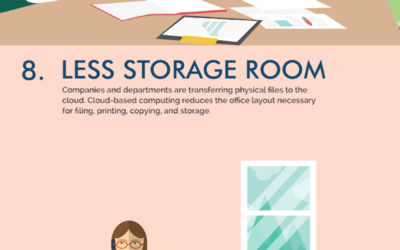How a bot could automate 80% of startup investment screening
How a bot could automate 80% of startup investment screening.
After all, I have a series of questions and I need to fill in answers.
For example, the bot asks questions about who is on the founding team, what the market looks like, and how the idea has been validated.
Pitchbot screened 5,000 startup pitches in its first 24 hours of operation.
If I were screening companies full-time, I might be able to research around 100.
After all, Pitchbot was built as a tool for entrepreneurs, not for VCs, and yet it’s already taking some work off of my plate.
Democratizing VC time with data-driven choices Screening startups is a pain point for VCs.
They have to rely on tips from insiders and other trusted parties to make investment decisions.
Bots could give venture capitalists the best of both worlds: they can screen startups systematically while redistributing the VC’s time to portfolio companies and high-level decisions.
If large parts of our work are going to be automated, we need to keep lifting up the best ideas to generate new opportunities.
Google lets developers submit Daydream virtual reality apps
Google lets developers submit Daydream virtual reality apps.
For its first few months of availability, Google only worked with a select group of developers on Daydream-compatible apps.
That’s about to change.
Google has opened the doors for all developers creating apps along the company’s guidelines to submit.
The change in policy could dramatically shift momentum in mobile VR, with Samsung recently announcing it sold five million Gear VRs to date as we wondered whether Daydream was off to a rough start.
Many of Daydream’s apps were showing very small install numbers.
More options on software should represent a good thing for consumers as the Daydream ecosystem grows to support additional headsets and phones, all of which should be compatible with one another.
That said, curation and VR is a tricky balancing act.
If an app on your phone breaks it is just an inconvenience, but a VR app with problems can make the person wearing a headset feel ill. Additionally, too many apps can make it hard to find the quality content hidden among a number of copycats — a common problem in mobile app distribution as a whole.
We’ll keep you updated as we sort through both the good and bad in the coming wave of Daydream VR content.
Snap Said to Plan to Publicly File for IPO Late Next Week
Snap Said to Plan to Publicly File for IPO Late Next Week.
Snap Inc., the maker of messaging app Snapchat, plans to reveal financial statements and other disclosures for its initial public offering by late next week, according to a person familiar with the matter.
It will be the public’s first chance to see the performance of the fast-growing company, which is aiming to raise as much as $4 billion in its IPO.
Snap has already filed its information privately with the U.S. Securities and Exchange Commission.
In a recent private meeting with underwriter analysts, Snap emphasized how dedicated its users were to its app, which lets them send annotated videos and selfies, people familiar with the matter have said.
The company plans to emphasize its average revenue per user and is aiming to grow in more mature markets, according to the people.
After filing publicly, Snap must wait 21 days before starting a road show to tout the listing to investors.
On the current schedule, the company’s shares could start trading in March.
Noah Edwardsen, a Snap spokesman, declined to comment.
The technology news site Recode earlier reported the timing of the public filing.
How automakers are cashing in on the connected car craze
How automakers are cashing in on the connected car craze.
A glimpse of our collective future can be seen in Cadillac’s Book by Cadillac entrance — an on-demand, luxury lifestyle-driven vehicles by subscription.
Ford is also on board with FordPass — the first automaker-produced app that can provide services to drivers who don’t own a vehicle from that brand.
Automakers and other industry players are also forming partnerships to offer innovative connected car services.
Transportation-as-a-Service (at your service!)
The industry’s major technical infrastructure has relied entirely on a one-time sales revenue model for the last 110 years.
Today, models and development cycles are being sped up.
Automakers often don’t have the back-office capability to handle selling, billing, and provisioning on-demand products and services outside the dealer network and with a recurring revenue and customer lifetime value model.
In these cases, the consumer’s affinity and relationship are far more likely to reside with the provider of the service that puts them behind the wheel (think Zipcar, Enterprise CarShare, even Uber and Lyft) rather than the manufacturer of the vehicle itself.
The industry needs to steel itself for massive culture change where the dealership becomes part of the relationship, instead of the entire relationship.
Computer History Museum software exhibit features car crash simulations
Computer History Museum software exhibit features car crash simulations.
The crash test is just one part of the “life and death” section of the Make Software exhibition.
Back in 1994, there were about 28,000 elements in the mesh, as simulated by a super computer.
And now, there are about 5 million elements in a car simulation.
He was assigned to work in the lab’s Nuclear Explosives Engineering Division.
His job was to develop software to work on supercomputers to measure the impact of atomic bombs dropped at low altitudes.
He asked Lawrence Livemore to release the code as open source so that he could commercialize it.
And the lab put the code in the public domain in 1978.
“It was quite a bold step for them to take classified code and release it,” said Dag Spicer, senior curator at the Computer History Museum.
“They still do physical crashes to test their data, but most of it is done in simulations now,” Tashev said.
Game developers rally against Trump’s Muslim ban
Game developers rally against Trump’s Muslim ban.
Game developers around the world are protesting U.S. President Donald Trump’s order banning refugees and barring citizens from Iraq, Iran, Syria, Sudan, Libya, Somalia, and Yemen from entering the United States for 90 days.
Leaders such as Google cofounder Sergey Brin are protesting at American airports, where the bans are being enforced.
We’ve listed some of the tweets below, and will add to the list.
Of course we’ll refund affected attendees, and keep fighting for inclusivity.
Brianna Wu, who is running as a Democrat for Congress, tweeted: I will be there at Copley tomorrow, protesting this.
When I’m elected to congress, we’ll stop this unconstitutional religious persecution.
Paul Murphy, CEO of Dots, the maker of the popular Dots games, tweeted: Kristian Segerstrale, CEO of Super Evil Megacorp, sent an email to all employees and posted on Medium about his views on the ban.
Margaret Wallace, CEO of Playmatics, said in an email to GamesBeat, “The more Trump tries to stifle liberty and democracy, the stronger we become.
We are a nation of immigrants.
How a dating website is leading the latest web conversion trend
Microsoft released their Bot Framework.
A trend that started with SMS text messaging and will eventually lead to chat (or the ‘conversational interface’) being at the heart of how we communicate with businesses in the future?
Is this really a trend?
Adrian Zumbrunnen, a UX/UI Designer from Zurich, has even used a conversational web bot to replace his site.
Of those surveyed, 56% said they’d rather message than call customer service, and 67% said they expect to message businesses even more over the next 2 years.
It differs from a web bot, in that 100% of the conversation is human-human, and an expectation is set for an immediate live response.
Businesses need to have people waiting to take each chat, and each rep can only handle maybe 2–3 chats concurrently without the quality of service suffering.
But for most other types of businesses, live chat simply isn’t economical.
Changing user’s expectation Web bots may have a live chat capability (or ‘human takeover’).
But modern web bots promote the idea of messaging as an asynchronous communication – that a message is sent, and the reply comes back some time later.
15 Modern Office Furniture and Layout Trends (Infographic)
15 Modern Office Furniture and Layout Trends (Infographic).
Office culture and layouts have evolved tremendously over the past few years, thanks in part to the startup and tech world.
Layouts that feature comfortable creative spaces, collaboration-focused work stations and an overall fun environment is a trend that is here to stay.
While Silicon Valley startups were the first to debut this type of office environment, it has now caught on with companies of all sizes and across a wide range of industries.
It’s a trend that I personally see becoming even more popular — the benefits of this type of office environment are hard to deny.
Check out the infographic below by Rove Concepts that highlights fifteen popular modern office furniture and layout trends that you can get some inspiration from to help transform your current office into a more productive and creative space.
How to Act Self-Confident
How to Act Self-Confident.
To help with confidence development, simply try “acting confident” to the outside world, practicing how it feels.
The outside “show” helps the inside “take.” It’s okay to display confidence you don’t feel, to take a leap of faith.
Sometimes people take offense about “acting the part,” as if doing so means that they are fakes.
Anyone who has children knows parenting is a fake-it-till-you-make-it experience.
Surely confidence deserves the same pass.
Comparable fake-it-till-you-make-it action is also what most enterprises are built on.
(By the way, a good time to start your acting is first thing in the morning before your brain figures out what you’re doing.
Be determined to go through your day feeling undaunted.
If at the beginning, the middle or at the end of the day, you appear scared and timid, you will decrease others’ confidence in you at home and in the office.)
An Introvert’s Guide to Job Interviews (Infographic)
An Introvert’s Guide to Job Interviews (Infographic).
Interviews are daunting for anyone — but for introverts they can seem especially frightening.
Introverts can be labeled as “shy,” “nervous” or even “anti-social,” when in fact they just like to get things done in their own way.
They have their own set of superpowers that can be beneficial during interviews.
From Albert Einstein to Bill Gates, some of the smartest, most successful people in the world are introverts.
And being an introvert has some great advantages — you just have to know how to use them.
Before an interview, it’s important to prep, relax and plan ahead.
During an interview, use your skills to make personal connections and ask insightful question.
Later on, be sure to wind down and send a thank you email.
To learn how you can use your skills as an introvert in your next job interview, check out CashNetUSA’s infographic below.
How I Failed as a Mentor
How I Failed as a Mentor.
From the outside looking in, I seem to be an unparalleled success, and I have many young people who have asked me to teach them the magic formula for success.
There was a time when I wanted to be a supervisor, and once I was, I immediately wanted to be a manager, a director, a vice president and a CEO.
Recently, I failed miserably mentoring a young professional.
Yet, I take full responsibility for the failure of mentoring this young gentleman.
But it was soon obvious that he didn’t really want to learn how to achieve what I have achieved, rather, he wanted a magic potion that would turn him into me.
He thought he knew what it meant to “pay your dues” but he constantly asked questions like, “Can they make me do that?
So what did I learn from all this?
You can’t be the source of truth for someone you are mentoring; for mentoring to work the mentee must push back and question the advice.
Finally, I learned that the mentor cannot want success that is beyond the dreams or reach of the mentee.
20 Facts About the World’s Billion-Dollar Startups
Here’s What 3 Companies Did to Get There.
The people who have launched companies before receive higher valuations on their companies than first timers, an average of $5.88 billion compared to $4.29 billion.
But financial services is at number two with a combined value of more than $132 billion.
Those unicorns have a combined value of nearly $125 billion.
In 2014, 58 companies became unicorns.
In 2016, China and the United States were neck and neck for the number of companies gaining unicorn status.
The top 10 most valued companies are evenly split between China and the United States.
One-hundred-fifty companies, the majority of the list, are valued between $1 billion and $2 billion.
Sixteen businesses have a valuation of more than $10 billion.
There is only one company in the top 10 that was launched in the 1990s: Alibaba, at number five, started in 1999.
With $4.4 bn investment across 1017 deals in 2016, the ups and downs of India’s startup ecosystem
Consider the following figures – In 2013, Indian startups raised funding of $1.6 billion in 300 deals.
A key reason for the sharp decline is the fact that in 2015, sectors such as food, hyperlocal, ecommerce and taxis were the flavours of the year.
Deals up The good news is that the number of deals has gone up dramatically and continues to go upwards.
In fact, the number of new startups founded in 2016 has gone down, yet the number of startups that has got funding has gone up.
Even though there is a lot of potential in this segment, It does not seem that this segment will grow too much in 2017, since there is no strong pipeline of innovative consumer startups gearing up for big fund-raising.
The Retail segment got funding of $975 Million in 2016.
No fuss Education received $196 Million in funding, but it was dominated by Byju’s with $140 Million.
The bubble in food has died a quiet death, and for good reasons.
The more interesting thing about food is that ventures that are setting up restaurants or producing food are getting funded.
Together these segments received just $8 Million, but the impact of these sectors can be huge.
14 Free Tools Every Solopreneur Needs
14 Free Tools Every Solopreneur Needs.
The free plan allows you to build individual connections and create basic automation, while the premium plan allows greater customization of the automation processes.
There is absolutely no cost when you use one of Shake’s free templates, or you can upgrade to the monthly plan to make extensive customizations.
Adobe Spark If you’ve read anything about using social media to grow your business, you already know how important it is to have high-quality graphics that are designed for the platform you are using.
GetResponse Email marketing and connecting to prospective clients through those efforts is incredibly important to effectively grow your business.
The upgrade option catches more details.
As you gain traction and need more options, it is easy to upgrade to one of the tool’s monthly plans to unlock additional features.
The free plan is perfect for a small business, offering 20 invoices per month in multiple currencies, for up to 10 clients.
All plans feature the ability to accept online payments and include a profit and loss report to make tax time a little easier.
Assistant.to Just because you are a solopreneur doesn’t mean you want to do every single task for yourself.
Ina Fried joins Politico co-founder’s Axios Media as chief tech correspondent
Ina Fried joins Politico co-founder’s Axios Media as chief tech correspondent.
Pretty much everything intersects with technology in some way in the world today, so the challenge won’t necessarily be about finding content but figuring out how to put it in the right context.
“That doesn’t mean dumbing it down.
Newsletters are naturally in the cards, as that’s also become an increasingly popular method of getting media into the hands of readers.
“If someone’s done a great job explaining something, one of the things that Axios does is highlight that and distill it,” Fried said.
“It’s not about pure aggregation, it’s where you have the inside track and expertise breaking those stories.
“I think journalism as a whole has work to do,” Fried said.
And we’re still in the process of figuring that out.
What attracted me to [Recode co-founders] Walt [Mossberg] and Kara [Swisher] was, they’re incredible journalists and great entrepreneurs.
I want Recode to be successful, and Axios, and BuzzFeed, because we need new businesses that work.” The whole hiring started with a big inside joke in the tech media world.
Everything You Need to Know About RegTech
Other applicable technologies, according to Bloomberg BNA, include machine learning, “biometrics, the interpretation of unstructured data such as e-mails and Facebook posts, and the use of application programming interfaces (APIs).” These tools will be used for “aggregating big data, modeling risk for bank stress-testing, monitoring of capital-requirement compliance, updating compliance manuals, improving anti-money laundering and know-your-customer (KYC) programs and preventing fraud and in-house violations.” BBVA Research noted some other technologies involved in RegTech.
RegTech firms will develop solutions to meet the needs of businesses and regulators.
Financial institutions will adopt and develop RegTech solutions.
In fact, banks are already using technological tools so that they can meet regulatory requirements.
The benefits of RegTech As EY’s 2015 Global Governance, Risk and Compliance Survey found, “adoption of RegTech will provide operational efficiencies and cost benefits when applied to current compliance and risk management practices” in the short term.
RegTech will solutions will do the following: Drive “down the cost of compliance by simplifying and standardising compliance processes through automated mapping of regulatory risks to key business processes, thereby reducing the need for manual and duplicate checks.” Utilize “sustainable and scalable solutions, allowing for flexibility and growth as business needs change.” This will help enterprises “move away from rigid enterprise risk management systems.” Assist firms “proactively identify risks and issues” by using “scenario analytics and horizon scanning for new regulations.” Allow “controls and risk frameworks to be linked seamlessly” when RegTech solution work with enterprise-wide governance and risk and control platforms.
“New RegTech platforms are also expected to allow seamless compliance reporting.” More specifically, RegTech will provide the following long-term benefits.
Deloitte has found that RegTech solutions work best in “information based obligations and risk identification and management tools that include tools for legislation and regulation gap analysis, compliance, health checks, management information, transaction reporting, regulatory reporting, activity monitoring, training, case management and risk data warehouses.
RegTech solutions can use different forms of online identity verification to assist in this process.
Fund managers and banks are also looking at supporting and partnering with RegTech startups to address the growing regulatory and compliance demand as well as assist in spreading adoption of RegTech solutions for payments and governance.
Snapchat will file for IPO next week
Snapchat will file for IPO next week.
(By Lauren Hirsch and Liana B. Baker, Reuters) – Snap Inc., the secretive technology company that owns the popular messaging service Snapchat, is due to reveal its financials within a week as it moves toward its eagerly awaited initial public offering (IPO), sources familiar with the situation said on Friday.
The Venice, California-based company will publish the registration document it secretly filed with U.S regulators last autumn, containing a dossier of tightly held finances and its plans for operating as a public company.
The sources, who cautioned that Snapchat’s plans may still change, asked not to be named because the information is private.
A spokeswoman for Snap Inc. declined to comment.
Under that law, companies with less than $1 billion in revenue can secretly file for an IPO, allowing them to quietly test investor appetite.
A company must make its initial IPO prospectus filing, officially known as an S-1, public at least 15 days before beginning its so-called “road show,” in which it markets the IPO to investors.
Snapchat is expected to offer new investors “no-vote” shares as part of its IPO, the sources said.
Such a structure will deny investors voting power over the company’s corporate decisions, leaving more control in the hands of its board and co-founders, Evan Spiegel and Bobby Murphy.
Keeping tight control is common in companies closely associated with their visionaries, who often prefer to innovate without being questioned by a broad array of investors.
Climate Change and Robotics
This means that 38 billion water bottles or $1 billion worth of recycled materials are wasted every year.
By training its system of recycling stations to use a neural network, the AI autonomously learns the types of materials it needs to quickly pick from real-time data feeds via its connected spectroscopic cameras, 3D laser scanners, and metal sensors.
One of the benefits of our software [is] that it actually can adapt to the changing waste streams.” Spanish-based Sadako Technologies is also working on AI-infused garbage sorting systems, just on a smaller scale.
Similar to Zen, Sadako uses proprietary algorithms that connect to its own multi-layer neural network system hosted on the Cloud.
The deep learning computing platform is able to process and identify recyclable materials in real-time via computer vision sensors.
The company is aiming for their robots to replace human pickers in the next few years by dramatically reducing the cost of labor and technology.
We are performing the detection using a normal camera and AI computer vision.
The use of neural networks enables AMP to offer a very inexpensive solution that integrates off-the-shelf robotic hardware and sensors.
AMP’s software promises a significant reduction in capital costs and plant efficiency to change the economics of recycling and hopefully reduce our landfills.
Trying to turn garbage into gold costs a lot more than expected.” According to the US Department of Labor there are close to 400,000 workers within the waste management industry that dispose of the 220 million tons of garbage every year.


















